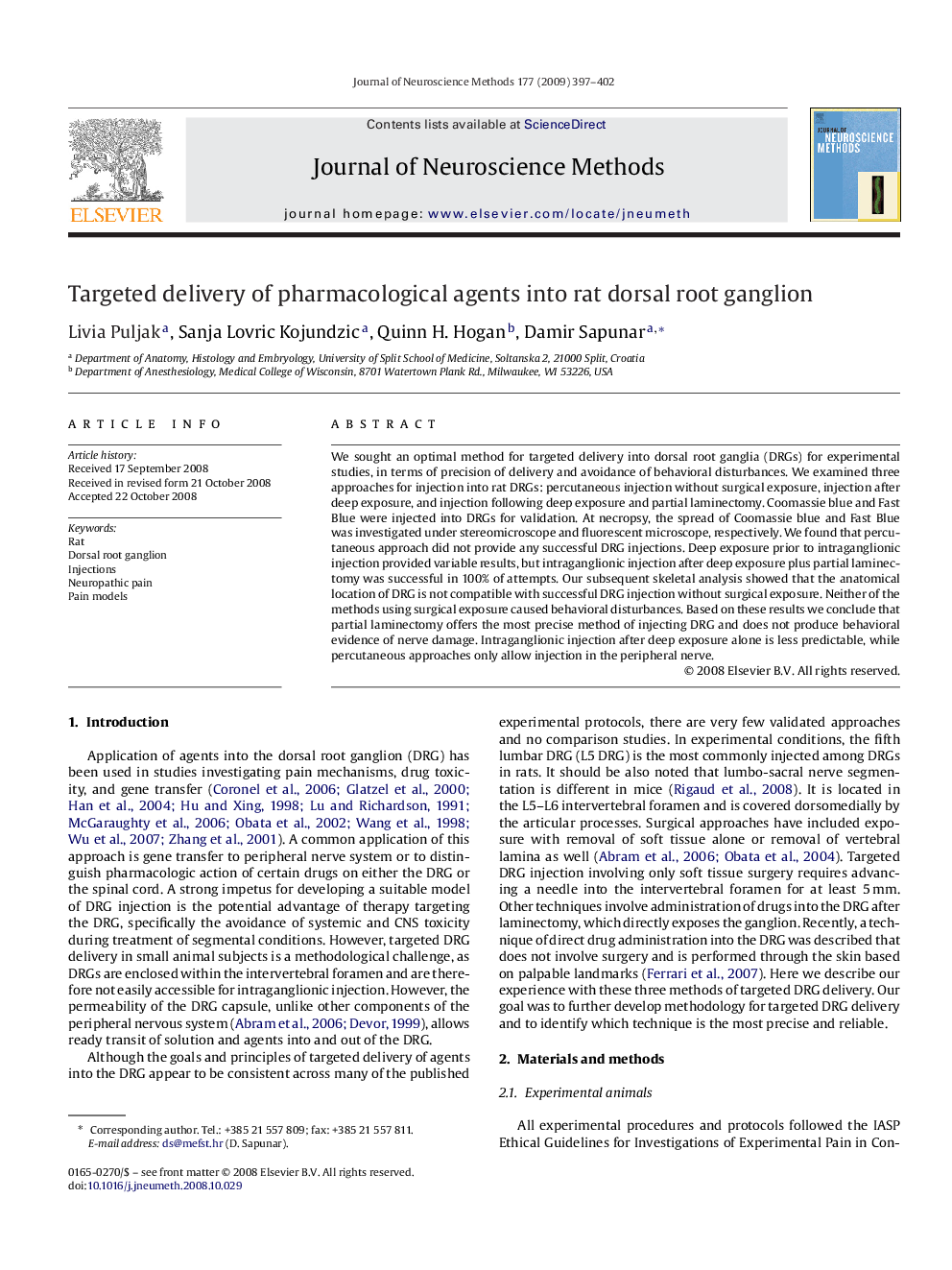| Article ID | Journal | Published Year | Pages | File Type |
|---|---|---|---|---|
| 6270316 | Journal of Neuroscience Methods | 2009 | 6 Pages |
Abstract
We sought an optimal method for targeted delivery into dorsal root ganglia (DRGs) for experimental studies, in terms of precision of delivery and avoidance of behavioral disturbances. We examined three approaches for injection into rat DRGs: percutaneous injection without surgical exposure, injection after deep exposure, and injection following deep exposure and partial laminectomy. Coomassie blue and Fast Blue were injected into DRGs for validation. At necropsy, the spread of Coomassie blue and Fast Blue was investigated under stereomicroscope and fluorescent microscope, respectively. We found that percutaneous approach did not provide any successful DRG injections. Deep exposure prior to intraganglionic injection provided variable results, but intraganglionic injection after deep exposure plus partial laminectomy was successful in 100% of attempts. Our subsequent skeletal analysis showed that the anatomical location of DRG is not compatible with successful DRG injection without surgical exposure. Neither of the methods using surgical exposure caused behavioral disturbances. Based on these results we conclude that partial laminectomy offers the most precise method of injecting DRG and does not produce behavioral evidence of nerve damage. Intraganglionic injection after deep exposure alone is less predictable, while percutaneous approaches only allow injection in the peripheral nerve.
Related Topics
Life Sciences
Neuroscience
Neuroscience (General)
Authors
Livia Puljak, Sanja Lovric Kojundzic, Quinn H. Hogan, Damir Sapunar,
